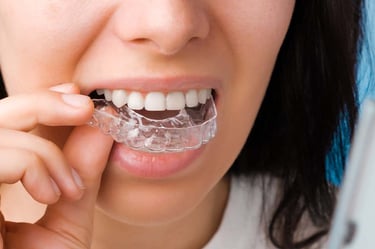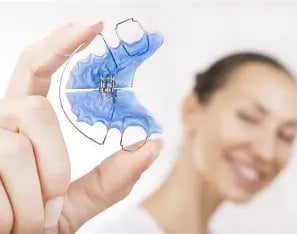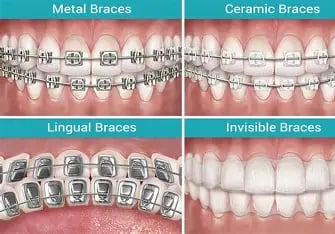SERVICES
Dental Implants
Dental implants are artificial tooth roots placed into the jawbone to replace missing teeth, restoring function, appearance, and confidence.
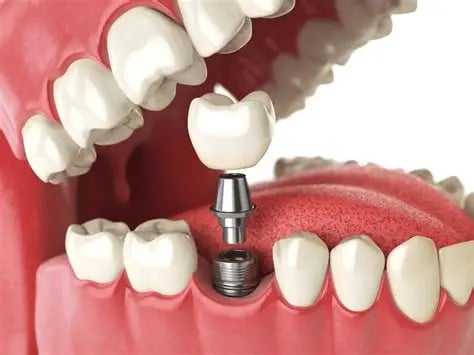

Clear Aligners
Clear aligners are transparent, removable trays used to straighten teeth discreetly. They are comfortable, convenient, and nearly invisible compared to traditional braces.
Root canal treatment is a dental procedure to save a damaged or infected tooth by cleaning the pulp, sealing it, and restoring function.
Root Canal Treatment




Surgical Tooth Removal
Surgical tooth removal is a procedure to extract teeth that cannot be removed easily, often due to impaction, damage, or decay.
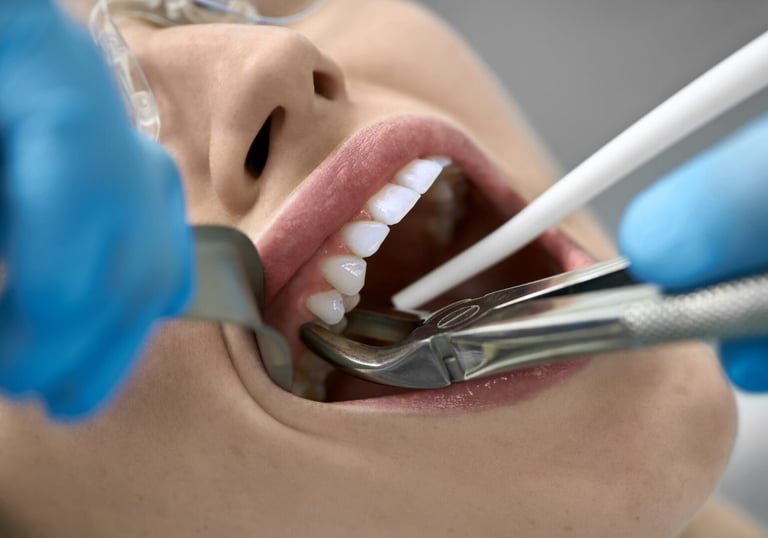

Dental Braces
Dental braces are orthodontic devices used to correct misaligned teeth and jaws, improving bite, function, and smile aesthetics.
Pediatric dentistry is a dental specialty that focuses on the oral health of children, providing preventive and treatment care from infancy to adolescence.
Pediatrics Dentistry




Smile Designing
Smile designing is a cosmetic dental treatment that enhances the appearance of your smile by improving teeth shape, color, and alignment.


Tooth Whitening and Cleaning
Tooth whitening and cleaning help remove stains, plaque, and tartar, restoring a brighter smile and promoting healthy gums and teeth.
Geriatric dentistry focuses on maintaining oral health in older adults, addressing age-related dental issues and improving quality of life.
Geriatric Dentistry




Patient Education
Tooth Ache
Toothache: Causes & Care
A toothache is pain felt in or around a tooth. It can range from a mild discomfort to sharp, throbbing pain.
Common Causes:
■ Cavities (tooth decay): Damage to the tooth enamel exposing sensitive layers.
■ Gum disease: Swollen or infected gums can cause pain around teeth.
■ Tooth fracture or crack: Even a small crack can cause severe pain.
■ Infection or abscess: A buildup of bacteria inside the tooth or gum.
■ Tooth sensitivity: Pain when eating hot, cold, or sweet foods.
What You Can Do:
■ Rinse with warm salt water to reduce swelling.
■ Take an over-the-counter pain reliever for temporary relief.
■ Avoid very hot, cold, or sweet foods until you see a dentist.
When to See a Dentist:
■ If the pain lasts more than a day or two.
■ If the pain is severe, or comes with swelling, fever, or difficulty opening the mouth.
Treatment Options (by your dentist):
■ Fillings or crowns for cavities.
■ Root canal treatment if the tooth nerve is infected.
■ Gum treatment for gum disease.
■ Extraction if the tooth cannot be saved.
�� Important: Home remedies may give short relief, but only a dentist can treat the real cause of toothache.


Wisdom Tooth Pain & Remedies
Wisdom teeth are the last set of molars, usually appearing between ages 17–25. Sometimes, they don’t have enough space to grow properly, which can lead to pain, swelling, or infection.
Common Causes of Pain:
■Impaction: Tooth trapped under gums or bone.
■Partial eruption: When only part of the tooth comes out, making gums prone to
infection.
■Crowding: Pressing against other teeth, causing discomfort.
■Infection (pericoronitis): Food and bacteria trapped around the tooth.
Home Remedies for Temporary Relief:
■Rinse with warm salt water to reduce swelling and clean the area.
■Apply a cold compress on the cheek to numb pain and reduce swelling.
■Take over-the-counter pain relievers (as advised by your doctor).
■Maintain good oral hygiene, gently brushing around the area.
When to See a Dentist:
■Persistent pain or swelling.
■Difficulty opening the mouth.
■Fever or spreading infection.
■Pain affecting chewing or daily life.
Dental Treatments:
■Cleaning and prescribing antibiotics (if infected).
■Minor gum surgery (removing the gum flap).
■Extraction of the wisdom tooth if it’s severely impacted or repeatedly causing problems.
�� Note: Home remedies give temporary relief, but a dentist’s examination is the only way to solve the root cause.
So Get Your Appointment soon.....
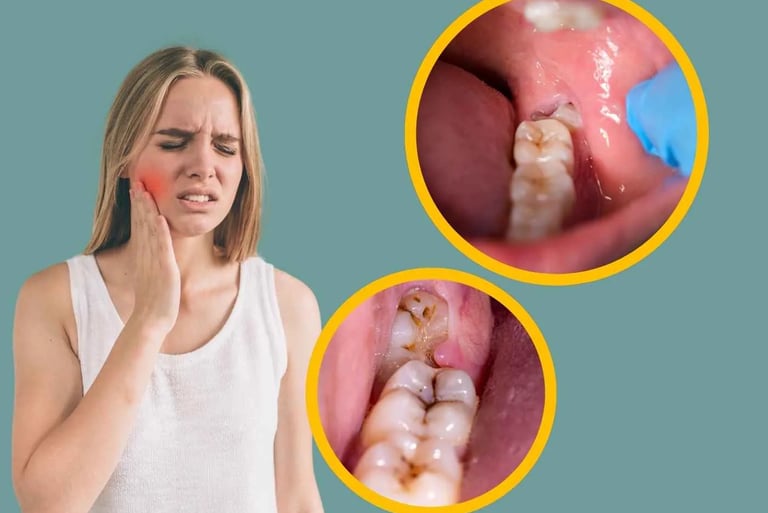

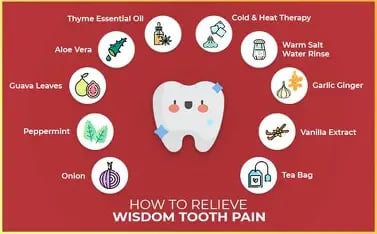

Tooth Alignment Options
If your teeth are crooked, crowded, or have gaps, there are safe and effective ways to straighten them.
1. Braces (Metal or Ceramic)
■ Small brackets are fixed on the teeth with a wire running through them.
■ They slowly move teeth into the right position.
■ Metal braces are strong and visible, while ceramic braces look tooth-colored and
less noticeable.
2. Invisible Braces (Clear Aligners)
■ A series of clear, removable trays custom-made for your teeth.
■ Almost invisible and more comfortable.
■ Can be removed while eating or brushing.
3. Lingual Braces
■ Braces fixed on the inside (back side) of the teeth.
■ Not visible from the front, but may take time to get used to.
4. Retainers
■ After treatment, retainers keep teeth in their new position and prevent them from moving back.
�� Which option is best?
It depends on your age, lifestyle, how much correction is needed, and your budget. Your dentist or orthodontist will guide you to the most suitable choice.
